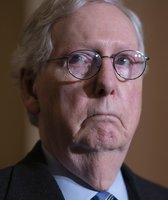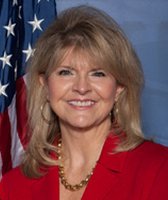Stand up for the facts!
Our only agenda is to publish the truth so you can be an informed participant in democracy.
We need your help.
I would like to contribute
Labor force participation is at lowest point since 1978, says Texas Sen. Ted Cruz
President Barack Obama’s upcoming State of the Union address gave Republicans and Democrats on the Sunday news shows another chance to make their case about the country’s economic performance over the past five years.
On Fox News Sunday, Obama adviser Dan Pfeiffer pointed out the country has added 8 million jobs since the health care law passed in March 2010.
Sen. Ted Cruz, R-Texas, offered a different take on the state of the labor force on Face the Nation.
"Why are jobs and economic growth so dismal?" he asked. "We’ve got the lowest labor force participation in over three decades, since 1978. And if President Obama wants to give an honest, candid State of the Union address this week, he’ll address the fact that his economic policies are not working."
It's difficult to say how Obama's policies are causing the economy to stall or succeed, but we can examine Cruz's specific claim about labor force participation.
Cruz, whose press office did not respond to our request for comment, is correctly breaking down data from the federal Bureau of Labor Statistics.
The "labor force participation rate" is another measurement of the health of the labor market. The unemployment rate is the number of people who are not working as a percent of the labor force.
There are multiple lenses through which to view jobs data.
Another measure, the labor force participation rate, refers to the percentage of Americans who are considered to be in the labor force as a part of the overall population. To be counted in the labor force, someone must be working or actively looking for work. In December (and also October), the labor force participation rate was 62.8 percent. In January and March of 1978, it was also 62.8 percent.
We know what you’re thinking: Cool numbers, PolitiFact, but what do they mean?
Featured Fact-check
Take a look at the trend. The labor force participation rate had been increasing since 1948, the first year the labor force participation rate was calculated. Then, it was 58.6 percent. It peaked in the late 1990s and 2000 to just more than 67 percent, before more recently hitting its lowest point in 36 years. It’s fallen 2.9 percentage points since Obama’s first month on the job in January 2009.
What’s happening is the subject of an ongoing debate.
There is understandable concern about the country’s long-term unemployed and discouraged workers. The economic recovery from the 2007-09 recession has been slow, which may have propelled people to go back to school, stay at home with their kids or give up on a search altogether when they could not find jobs in their field.
Still, many economists attribute at least a portion of the drop to an unsurprising reason: the retirement of baby boomers, which does not exactly qualify as an American horror story.
"The trick is to determine how much of the drop represents the impact of a lagging economy, which is worrisome, and how much is due to non-worrisome factors, such as the aging of the adult population," said Gary Burtless, an economist at the Brookings Institution, in a 2013 PolitiFact interview.
There’s no reason to believe things will change anytime soon. The labor force will become older, slowly add workers as the overall population grows and become more racially diverse in the next decade, according to the Bureau of Labor Statistics.
BLS researchers say the labor force participation rate will continue to slowly fall until hitting 61.6 percent in 2022 -- a projected decline of 1.2 percentage points since December 2013. The past decade saw a much more dramatic drop, declining 3.6 percentage points since December 2003.
Our ruling
Cruz said, "We’ve got the lowest labor force participation in over three decades, since 1978."
We’re pretty confident Obama isn’t asking Cruz for State of the Union talking points, and he’s especially not interested in one that may suggest today’s economic policies aren’t working.
Cruz has his statistics right. But we’ll note at least part of the trend has been years in the making and appears strongly tied to the inevitable aging of the baby boomer population. In other words, it’s not all Obama’s fault, and it’s not going to change the minute he leaves office.
We rate Cruz’s statement Mostly True.
Our Sources
PolitiFact, "Are 90 million Americans not working or looking for work?" July 30, 2013
PolitiFact, "Rep. Cathy McMorris Rodgers says fewer now working than any point since 1979," April 12, 2013
Washington Post The Fact Checker, "How much is Obama to blame for the worst labor participation rate in 40 years?" Jan. 9, 2014
Washington Post Wonkblog, "Why the labor force participation rate matters," May 1, 2013
Bureau of Labor Statistics’ Monthly Labor Review, "Projections to 2022: Labor force participation rate continues to fall," December 2013
Google spreadsheet for labor participation rate since 1970
Bureau of Labor Statistics, glossary of terms, accessed Jan. 26, 2014
Browse the Truth-O-Meter
More by Katie Sanders
Labor force participation is at lowest point since 1978, says Texas Sen. Ted Cruz
Support independent fact-checking.
Become a member!
In a world of wild talk and fake news, help us stand up for the facts.












































